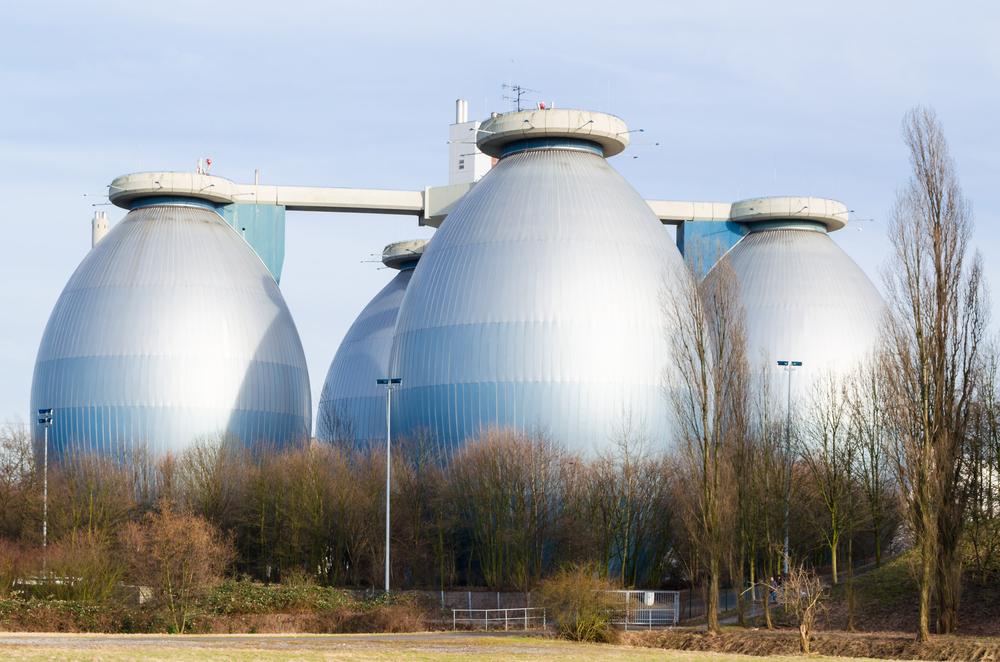By Sakshi Kabra Malpani, Publishing Associate: Researcher and Writer at Save the Water™ | November 5, 2024
Edited by Joshua Awolaye, Publishing Associate: Editor at Save the Water™
Biogas yield from sewage sludge helps the environment by reducing sludge volumes, cutting greenhouse gas emissions, and producing methane.
Connection Between Sewage Sludge and Biogas
Sewage sludge comes from the solid wastes separated during wastewater treatment. There are three types of sewage sludge: primary, secondary, and tertiary.
- Primary sludge forms during primary wastewater treatment and has a higher organic composition.
- Secondary sludge, also called waste activated sludge, comes from the biological treatment of wastewater. It is rich in organic matter and contains microorganisms.
- Advanced wastewater treatment produces tertiary sludge, but it has poor organic content.
Thus, a mix of primary and secondary sludge is best for producing biogas. On average, a ton of sewage sludge can produce about 350 m3 of biogas. This can be turned into 850 kWh of electric energy.
How is Biogas Produced?
Organic materials in sewage sludge break down to form methane. This occurs through an anaerobic microbial process that releases biogas. The biogas from this process usually consists of 50-70% methane and 30-50% carbon dioxide. It also contains small traces of other gases. These include hydrogen, hydrogen sulfide, nitrogen, water vapor, and volatile organics. Since biogas is a rich source of methane, it can be a valuable energy resource. Anaerobic digestion is a biological process that occurs in the absence of oxygen. It involves using microbial agents to break down complex organic matter into methane. The process involves four main stages, namely, hydrolysis, acidogenesis, acetogenesis and methanogenesis. Hydrolysis is the slowest step where complex organic compounds like carbohydrates, fats and proteins are broken down into simpler molecules. During acidogenesis, acidogenic bacteria further disintegrate simpler molecules. In the next step, acetogenic bacteria further reduce them into acetic acid, carbon dioxide and hydrogen. In the final step, the products of acetogenesis change into methane and release biogas. The amount of biogas produced depends on several factors. These include the sludge’s organic content, pretreatment and treatment methods, digestion temperature, and retention time.
Benefits and Challenges
Biogas is a renewable energy source that offers various advantages. It can generate electricity, heat, and fuel. This will gradually decrease our reliance on fossil fuels. It also reduces the direct release of greenhouse gasses into the atmosphere. Digestate, a byproduct of biogas production, is rich in nutrients and can be further utilized as fertilizer. Additionally, it cuts the costs of conventional sludge treatment and disposal methods. It significantly decreases the volume of solid waste that ends up in landfills.
However, despite these many benefits, the making of biogas has some challenges. Anaerobic digestion is a long, costly process. It requires expensive equipment and operations. This raises wastewater treatment costs. It is also hard to do on a small scale. Moreover, many environmental, safety, and health regulations govern biogas production. They mostly address the proper handling of waste from the process. Biogas may contain toxic trace gasses and elements. Cleaning technologies are vital to prevent harm to the environment or equipment. Lastly, biogas production plants need skilled operators to manage them.
Latest Innovations
Some innovations can improve the efficiency and scalability of biogas production from sewage sludge.
- Thermophilic Digestion: Conventional anaerobic digesters are mesophilic. This means they operate at low temperatures (30- 40℃). Research shows that using thermophilic digesters at higher temperatures (50-55°C) boosts the rate of digestion and biogas production. It also shortens the retention time from 35 to 10 days.
- Co-Digestion: This is the process of using more than one feedstock material. Methane production largely relies on the carbon-to-nitrogen ratio of feedstock. Hu and Shen found that mixing sewage sludge with other organic waste like food waste improves its carbon-to-nitrogen ratio. It also boosts biogas yields. Combining thermophilic and mesophilic processes with co-digestion boosts methane yield and production rates.
- Advanced Pre-Treatment Technologies: Advanced physical, chemical, mechanical, thermal chemical pre-treatments can enrich sludge biodegradability, thereby increasing biogas yields. These include extrusion, microwave irradiation, steam explosion, sludge disintegration, hydrothermal processing, and ozonolysis.
- Combined Heat and Power Systems: These systems use the biogas produced to generate electricity and heat. This increases the overall energy efficiency of biogas plants.
Recommendations
By transforming sewage sludge into bioenergy, municipalities and wastewater treatment facilities can reduce their environmental footprint, save on waste disposal costs, and contribute to the circular economy. Argonne National Laboratories assessed the recovery of valuable resources like biogas, biosolids, and power from wastewater treatment plants. It also discussed the environmental benefits and commercial utilization of these resources. Government subsidies and tax credits for renewable energy projects can offset the high costs of building biogas plants. In addition, government-industry partnerships in wastewater treatment can make biogas projects more efficient and scalable.



